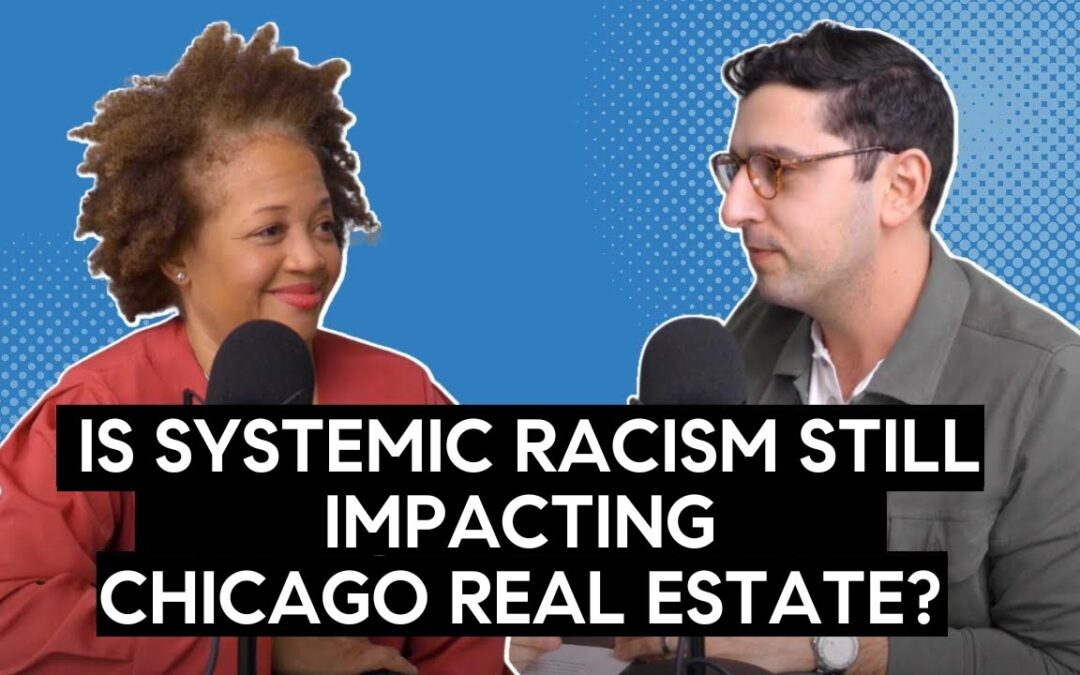A Discussion With CAR President Sarah Ware.
Systemic racism impacts many things, and real estate is not an immune sector. But how exactly do discriminatory practices still affect home ownership, especially in Chicago?
To answer our question, we had the chance to sit down with Sarah Ware, the second Black woman president of the Chicago Association of Realtors, to get her insight on the impact of racism in the industry today.
The Chicago Neighborhood Heat Map
When you look at a map of all 77 Chicago neighborhoods color-coded by race, some very clear patterns appear. Each neighborhood is almost exclusively comprised of one race, so we wanted to talk to Sarah about what practices caused the blatant divide.
Sarah: I’m rereading the Color of Law. Contract buying was very popular with African Americans, where you would have people that would own houses predominantly on the South and West side, and they would sell it to an African American on contract. They would pay their money every month, but if you are late for one payment, then it all goes to the wayside.
Ben: It was rent-to-own style?
Sarah: Yes, rent to own. But it was never intended for them to own. So you have the white owner across the street that had a house. Eventually they’d sell it for $300,000 to their family, but for us, we’d lose it. But they were slum lords. But it was owners that didn’t care about the community, and they were not from the community. And they sold it to predominantly African Americans with the dream of home ownership because it’s always been there.
And so they’d raise their families and were working two or three jobs to pay this note that had exorbitant mortgage rates — well, “mortgage rates.” They’d miss one payment because in the contract, they didn’t really read it or didn’t understand it, and they would either have to start all over, or they would lose it. So they formed a coalition where they would go against the owners. It worked for some, not many, but they were scared. And so now we are seeing the effects of the dollar value.
So someone’s parents could have owned a house and bought it for $10-15,000 and sold it for $300,000. That equity goal is to pay for their kid’s college or borrow against it. We are so far behind anyway, but it places us so far behind, and it predominantly was on the South and West side, which is why it’s not as thriving as it as some of the other neighborhoods that were contract binding.
Redlining In Chicago
What is redlining exactly? According to Investopedia, the definition is as follows: “Redlining is a discriminatory practice that puts services (financial and otherwise) out of reach for residents of certain areas based on race or ethnicity. Due to discriminatory lending practices, homeownership and wealth in redlined communities is much lower than in non-minority communities. Redlining is illegal.”
Investopedia also notes that “The term “redlining” was coined by sociologist John McKnight in the 1960s and derives from how the federal government and lenders would literally draw a red line on a map around the neighborhoods where they would not invest based on demographics alone.”
Forbes builds on this by saying that minorities were denied mortgages to live in certain areas on the (incorrect) grounds that they were automatically high risk because of their race or ethnicity.
As we know, just because something is illegal doesn’t mean it doesn’t happen. So we asked Sarah what she knew about the history of it in Chicago.
Ben: The history of redlining, from what I understand, was from a municipal standpoint and from a governmental standpoint. Agents and politicians were saying people belong here and certain people belong here. And the interesting part, I think, is that you only need a short period of time. If you can relocate people once, it takes a very long time for people to disperse again. Do you understand what the policy was?
Sarah: Well the government is the one that wrote the policy. The funny part is the government was writing the laws for mortgages, and mortgage companies were writing in Redlining clauses. So it was a combination of politics, the mortgage companies, and the local government — they all got together and made the laws for redlining, but then they would say, oh no, we don’t need to redline, but they’re the ones who put the laws in place.
Ben: You almost answered this already. If every realtor in Chicago was listening to this conversation about particularly redlining and African Americans not being able to get the same types of loans as white Americans, what would you tell them?
Sarah: So I wouldn’t tell them anything, but I’m hoping there’s a part of this conversation that has sparked their curiosity. Google it to find out more. This piqued my interest. I may look up a few things to find out the history of something. When we know our history, we can move forward because people can’t move forward without knowing the history and only knowing what they’re told.
But once you dive deep into the history of something and learn the origin of it, it’s like, oh, that’s pretty interesting. It’s not what I thought, but I could do better. And once someone asks me, or maybe I can tell them like, actually, this is how it started. I come from a place of education and learning, and knowledge. And so that’s my takeaway.


